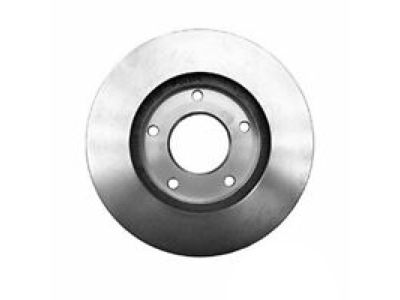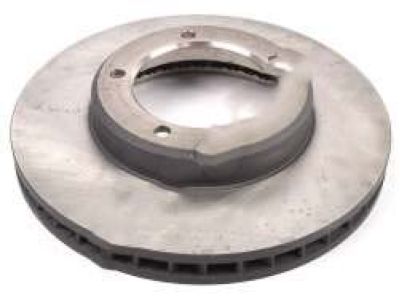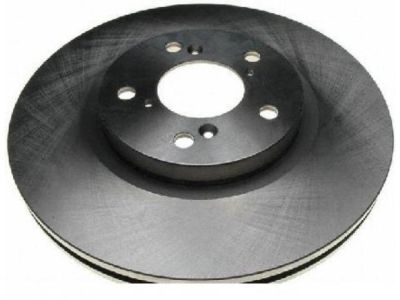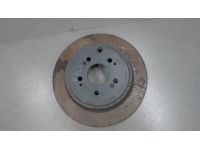×
- Live Chat
- 1-888-984-2011

My Garage
My Account
Cart
Genuine Honda Ridgeline Brake Disc
Disc Rotor- Select Vehicle by Model
- Select Vehicle by VIN
Select Vehicle by Model
orMake
Model
Year
Select Vehicle by VIN
For the most accurate results, select vehicle by your VIN (Vehicle Identification Number).
4 Brake Discs found
Honda Ridgeline Disk, Front Brake (17
Part Number: 45251-TK8-A02$103.12 MSRP: $145.65You Save: $42.53 (30%)Honda Ridgeline Disk, Rear Brake Drum In
Part Number: 42510-TG7-A00$103.12 MSRP: $145.65You Save: $42.53 (30%)Honda Ridgeline Disk, Front Brake
Part Number: 45251-SJC-A50$103.12 MSRP: $145.65You Save: $42.53 (30%)Honda Ridgeline Disk, Rear Brake Drum (Inner)
Part Number: 42510-SJC-A50$103.12 MSRP: $145.65You Save: $42.53 (30%)
Honda Ridgeline Brake Disc
Brake Disc is an important part of the braking system of Honda Ridgeline vehicles; this part is required to produce the friction needed for the deceleration of the truck. Usually constructed from gray iron, the Brake Disc is fixed to the wheel hub and is effective in co-ordination with the brake caliper and the friction pads. This is due to wear, deformation and indication by the development of a 'lip' at the edge of the rotor which renders it imperative to be replaced after some time of experience in high temperature operations. Honda Ridgeline Brake Discs may come in drilled or slotted designs, which may increase disc durability and performance, but also decreases brake pad durability. Two piece discs are also possible as are discs that are composed of a central body, using material and two outer edges, one of which can expand at a rate different from the second outer edge. Lubrication and examination of the Brake Disc should therefore be conducts periodically to avoid incidences such as scarring, cracking or rusting which would compromise the braking system of the vehicle.
In search of affordable OEM Honda Ridgeline Brake Disc? Consider browsing through our extensive inventory of genuine Honda Ridgeline Brake Disc. Not only do we provide market-leading prices and a manufacturer's warranty, but we also pride ourselves on exceptional customer service and swift delivery.
Honda Ridgeline Brake Disc Parts Questions & Experts Answers
- Q: How to check and replace brake discs on a Honda Ridgeline?A: Loosen the wheel lug nuts, raise the vehicle, and securely support it on jackstands. If checking the rear discs, release the parking brake. Remove the Brake Caliper. After removing the caliper bolts, suspend the caliper out of the way with a piece of wire. Remove the two caliper mounting bracket-to-steering knuckle bolts or on rear calipers, the bracket-to-knuckle bolts and remove the mounting bracket. Visually check the disc surface for score marks, cracks, and other damage. Light scratches and shallow grooves are normal after use. Deep score marks or cracks may require disc refinishing by an automotive machine shop or disc replacement. The brake pads on this vehicle were obviously neglected, as they wore down completely and cut deep grooves into the disc - wear this severe means the disc must be replaced. If pulsating has been noticed during application of the brakes, suspect disc runout. The most common symptoms of damaged or worn brake discs are pulsation in the brake pedal when the brakes are applied or loud grinding noises caused by severely worn brake pads. If these symptoms are extreme, it is very likely that the discs will need to be replaced. To check disc runout, place a dial indicator at a point about 1/2-inch from the outer edge of the disc. Set the indicator to zero and turn the disc. If the indicator reading exceeds the allowable runout limit, the disc should be refinished by an automotive machine shop. If disc refinishing or replacement is not necessary, you can deglaze the brake pad surface on the disc with emery cloth or sandpaper. It is absolutely critical that the disc not be machined to a thickness under the specified minimum thickness. The minimum (or discard) thickness is cast or stamped into the disc. The disc thickness can be checked with a micrometer. Remove the two disc retaining screws and remove the disc from the hub. If the disc is stuck to the hub, thread two bolts into the holes provided and tighten them. Alternate turning between the bolts will separate the disc from the hub. On rear discs, move the Parking Brake Shoes away from the drum portion of the disc by turning the star-wheel adjuster. Place the disc onto the flange. Install the disc retaining screws and tighten them securely. If there is rust on the face of the hub flange or on the disc, clean these surfaces and lightly coat them with anti-seize lubricant before installing the disc. Adjust the parking brake shoes. Install the caliper mounting bracket and caliper, tightening the bolts. Install the wheels and lower the vehicle. Tighten the lug nuts. Depress the brake pedal a few times to bring the brake pads into contact with the disc. Bleeding won't be necessary unless the brake hose was disconnected from the caliper. Check the operation of the brakes carefully before driving the vehicle.














